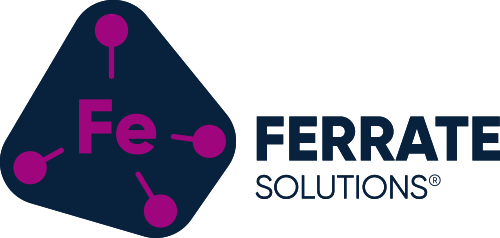Impounding Nutrient Rich Water can Never Begin to Prevent Massive Algal and Bacterial Blooms in Florida’s Waterways… NEVER…
– Dr. Tom Waite, Founder, Ferrate Solutions
Impoundment of nutrient rich water from agricultural runoff, or wastewater treatment plant effluent has evolved as the only acceptable treatment scenario to prevent disastrous algal and bacterial blooms in Florida. Now that increased governmental support is available to control these blooms, it is time to get serious about nutrient control options.
Upon review of the many studies undertaken to quantify the degree of remediation (removal of phosphorus and nitrogen) that takes place in a water impoundment, it becomes clear that such quantification is an impossible task. Most studies do not even attempt to evaluate the dynamics of nitrogenous compounds in an impoundment. Removal rates of phosphorus vary depending on the season, and the occurrence of major storm events. Determining yearly averages of removal of phosphorus in an impoundment is almost a useless venture, as major discharges of phosphorus from an impoundment most often occur during major storm events. In any case estimated removal can be anywhere between five and 50%. However, none of these studies are able to model an actual large-scale impoundment over long periods of time. In a rigorous engineering design, a mass balance analysis would be needed to account for all of the nutrient material in and out of the impoundment. In this case, biological utilization of the nutrients (production of biological mass) would need to be accounted for and the material would have to be removed from the impoundment (harvested) in order for a rigorous model to be developed. In summary, estimating the nutrient reduction capacity of large-scale impoundments is at best a guess, and even if the estimates are close it is obvious that impoundments remove very little nutrient material compared to the vast volume of impounded water required. In fact, without harvesting massive amounts of biomass from an impoundment, nutrients (and algae/cyanobacteria) can only continue to accumulate with time.
A wonderful (and obvious) example of a working impoundment is our own Lake Okeechobee. Lake O collects nutrient laden runoff from North Central Florida and provides impoundment for a long period of time, and the results of this “process” are clear (unlike the water). As any rigorous model of algal growth in Lake O would show, with time nutrients will increase. Unless the nutrients are physically removed from the lake environment (harvested), nutrients and biomass must increase.
Florida has generated an interesting scenario which is currently unfolding. We have lobbied long and hard for federal support to help build a large impoundment to protect the Everglades. At the same time three Florida environmental groups (CENTER FOR BIOLOGICAL DIVERSITY; CALUSA WATERKEEPER; and WATERKEEPER ALLIANCE, Plaintiffs), are suing the federal government (US Army Corps of Engineers, Department of the Interior, National Marine fisheries service, US Fish and Wildlife Service) to cease any discharges from Lake O into Florida’s waterways, because of the nutrients and high concentrations of algae & bacteria in the water.
Some of the claims:
“4. The Corps’ discharges under Lake O Regulation Schedule are polluted with toxic algae and nutrients and are causing significant adverse impacts to the Caloosahatchee and St. Lucie rivers and their estuaries.
5. The impacts of these discharges often coincide in time and location with persistent, deadly red tide.
6. These discharges adversely impact species listed under the Endangered Species Act (ESA), like Florida manatees, smalltooth sawfish, Johnson’s seagrass, sea turtles, and coral.
7. Past environmental analyses of the Lake O Regulation Schedule under the National Environmental Policy Act (NEPA) and ESA did not consider the long-term impacts of high-volume discharges beyond three years, discounted the effects of harmful algal blooms, and entirely failed to consider how climate change might affect LORS and harmful algal blooms.
“With health impacts in the foreground of water quality conversation, Army Corps acknowledges toxic algae and nutrients in Lake O releases.”
Our major impoundment is obviously not working as we would like. At least we can learn from the obvious…….!!
The numbers tell the story. With Florida’s 10 million acres of agricultural land plus 2,000+ domestic and industrial wastewater treatment plants, the input of nutrients (N + P) to Florida’s waterways is enormous. It is estimated that the yearly amount of fertilizer put on farmlands is in the order of 100 million lbs. of N & P. Nutrient input from wastewater is estimated at close to half of this amount. It is also estimated (hoped) that the EAA Impoundment will remove (only) 200 thousand lbs. of phosphorus per year ……. Three orders of magnitude difference. Clearly, if we are not designing and building nutrient removal systems that can GUARANTEE removal of millions of lbs. of nutrients per year, then we can never hope to “stem the tide”…. NEVER ..
Ferrate (FeO42-) has been demonstrated to effectively remove total phosphorus and total nitrogen from both agricultural runoff and wastewater treatment plant effluent. In our recent RFI submission to the FDEP, we showed how a small ferrate treatment plant (<1 MGD) could remove the same amount of phosphorus (+ nitrogen + suspended algae & bacteria) as the projected EAA impoundment. (at a chemical cost of approx. $55,000 per year). A medium size plant (100 MGD) would remove 20 million lbs. of phosphorus (+ nitrogen + suspended algae & bacteria) per year. A few of these medium size plants located strategically around central Florida could remove close to the same amount of nutrients that are added to Florida’s waters every year. It’s all about the numbers.

0 Comments